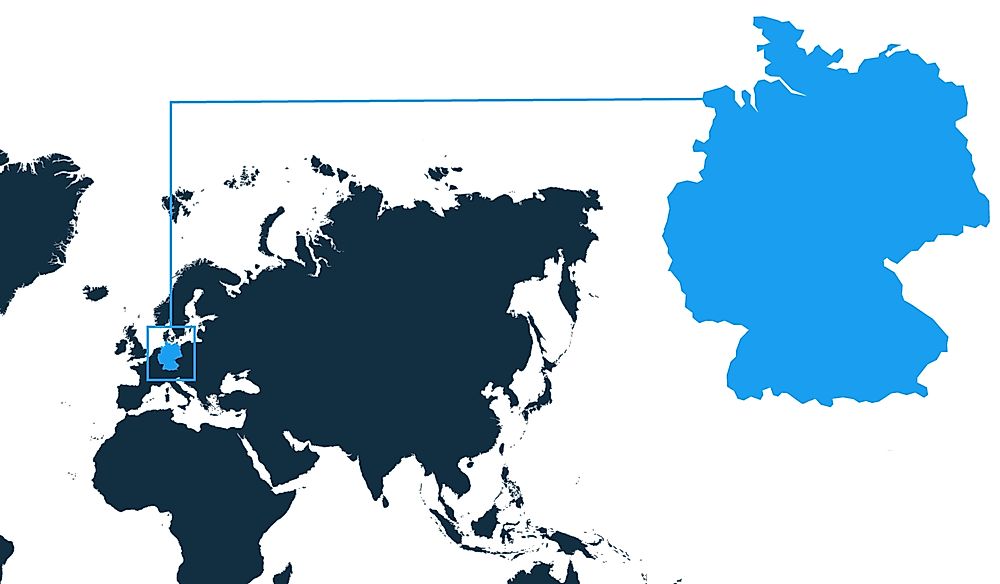Is Germany in Europe?

Germany is an independent state that is in the west-central part of Europe. Germany is surrounded by Luxembourg, France, Netherlands, Belgium, Switzerland, Austria, Denmark, Czech Republic, and Poland. It has sixteen constituent states which occupy an area of about 137,988 sq miles with over 81 million inhabitants. It is the most populous European country which lies entirely in Europe and the second most highly populated country in the continent, right after Russia. It is the sixty-fourth biggest state in the world and seventh in Europe by area.
Geography
Germany extends from the coasts of the Baltic and North Seas through the North European Plain to the Alps. The northern third of its territory is on the North European Plain which has a flat topography crossed by numerous north-flowing waterways including Oder, Weser, Ems, and Elbe. The marshy and wetlands terrains are located along the Frisian coast and near the Dutch boundary. There are numerous glacier-formed lakes in the Sandy Mecklenburg in the northeastern part of the country. The southern part of Germany is defined by multiple mountain ranges and linear hills including the Franconian and Swabian Albs and the Bavarian forest on the boundary between the Czech Republic and Germany. The Black Forest on the France-Germany boundary separates Danube’s headwaters from the Rhine.
Climate
Germany is located between continental Eastern Europe and the oceanic Western European climates. A considerable part of the country has a warm seasonal east climate that is dominated by the moist westerly winds. Germany does not have a consistent dry season, and it gets an average of 31inches of precipitation annually. It has warm summers exceeding 30°C with cooler winters. The coldest region in the country (other than the mountain peaks) is situated around Gorlitz and Dresden while the warmest part is on the French-German border.
Demography
Germany has a population density of about 588 people per square mile and over 82,800,000 residents. Germany has one of the lowest fertility rates on earth of about 1.41 births per woman and a life expectancy of over 80.19 years. The death rate in the country has been higher than the birth rate since the 1970s. There are four sizeable communities in Germany which are known as the "National minorities" since their ancestors have lived in the country for centuries. These minorities include the Frisians, Brandenburg, Sorbs, and the Danish. Germany is the second most famous immigrant destination right after the United States, with over 10 million immigrants. According to the Federal Statistical Office, over 18.6 million people were of partial immigrant ancestry or immigrants by 2016.
Languages
German is the predominant and official language of Germany. It is one of the official 24 languages in the EU (European Union) and the most common first language in Europe with over 100 million native speakers. Some of the indigenous minority dialects in the country include Saterland Frisian, North Frisian, Romany, Sorbian, Low Rhenish, Low German, and Danish. Some of the commonly used immigrant languages are the Balkan languages, Polish, Kurdish, Russian, and Turkish. The locals are multilingual with over 27% of them being fluent in over two foreign dialects while 67% of them know at least one.











